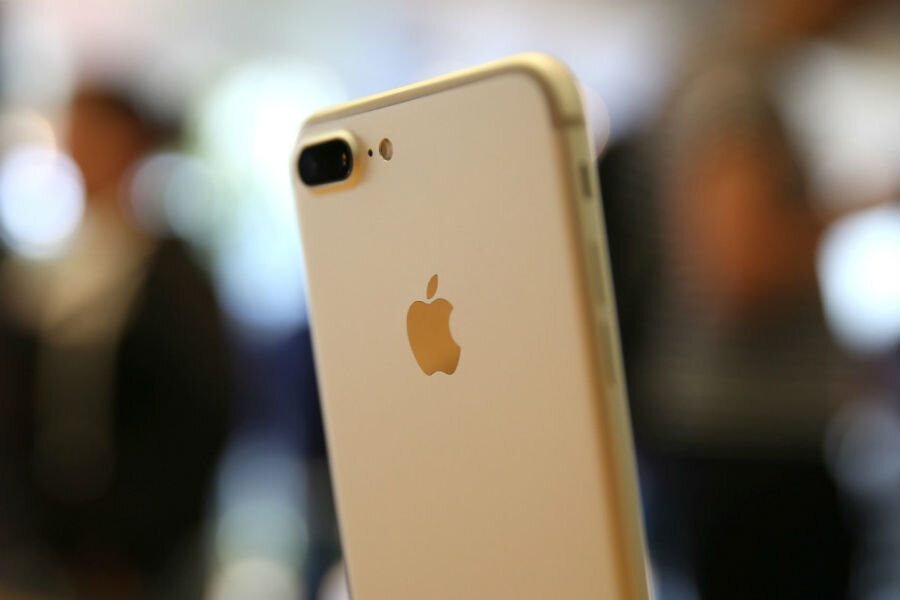Can Apple really run on 100 percent renewable energy?
Loading...
Coming soon to a store near you: the clean-energy iPhone. Apple committed on Monday to powering its operations entirely on renewable energy and helping its suppliers do the same.
As part of Climate Week NYC 2016, Apple – along with Bank of America, Amalgamated Bank, and other corporate leaders – joined the RE100 campaign, a global partnership of businesses committed to the renewable energy transition. Apple also announced the completion of its 50-megawatt solar farm in Arizona, which will power Apple's Mesa, Ariz., data center.
For advocates, companies' commitment to renewable energy provides an impetus for renewable power generation, since suppliers are assured of a buyer for their power. They say that the private sector, which constitutes half of global electricity consumption, will be instrumental in the transition to a low-carbon economy.
Climate Week NYC has been sharing companies' commitments and other Climate Week events on social media:
Apple already powers its operations largely on renewable energy. According to the company's website, renewable power represented 93 percent of Apple's global operations in 2015. In other words, getting to 100 percent may not be that much of a stretch.
At present, many businesses are meeting their RE100 pledges through power purchase agreements (PPAs). Apple, along with other tech firms, including Adobe, Google, and Microsoft, uses these agreements to buy renewable energy from a power company to meet their energy needs. They "lock in" a fixed rate for purchasing renewable electricity, and receive a certificate to prove that their share of power generation came from renewable sources.
Similar schemes in a number of states allow private individuals to switch over their power consumption. In theory, having corporations do the same should bring benefits on a larger scale.
But not everyone agrees with this assessment. Critics are concerned that PPAs demonstrate a lack of ambition on the part of corporations. They say that the ability to change over to renewable power may discourage companies from trying to use less energy or building their own power generation on-site.
Apple's solar farm in Arizona is one sign of the company's commitment to renewables. And in regions where industrial-scale renewable power generation does not already exist, Apple may have to build the infrastructure itself in order to hit its goal of 100 percent renewable energy. Since 2015, the company has been working with its Chinese manufacturing partners to install 4GW of new clean energy worldwide.
Apple has also pledged to cut carbon emissions in its supply chain, estimating that its suppliers account for 77 percent of the company's total emissions. On Monday, two Apple suppliers also set low-carbon goals. Solvay Specialty Polymers, which supplies iPhone antenna bands, and Catcher Technology, which provides aluminum phone casings, committed to operating on 100 percent renewable power by the end of 2018.
Lisa Jackson, Apple's vice president for environment, policy, and social Initiatives, told business and government leaders that Apple looks forward to advocating for clean energy worldwide. She quoted Apple chief executive officer Tim Cook, saying, "We have to be the ripple on the pond ... we can’t just be 100 percent renewable energy – we have to bring others with us."








